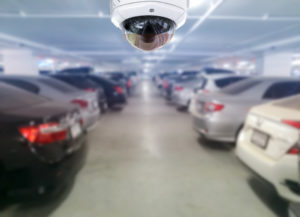Summer has arrived. As a result, it’s important to understand one of the most common (and depressing) forms of larceny in the United States while America enters the hottest season for vehicle burglary.
In 2016, Americans lost nearly $6 billion to motor vehicle theft, according to the Federal Bureau of Investigation (FBI). July is Vehicle Theft Prevention Month—a reminder for drivers to brush up on crime prevention, safe and smart parking, minimizing loss, and the changing climate of vehicle theft.
Since 1990, there has been a downward trend in car theft that has been attributed to improved technology for vehicle security systems and better crime tracking techniques in law enforcement. However, vehicle theft has risen by 15.3% just in the last three years. In 2015, there were more than 713,000 vehicles reported stolen in the U.S.A. Last year’s numbers are beginning to reveal that theft rates are on track to hit nearly 800,000, according to preliminary data from the FBI.
The numbers show America’s problem with vehicle theft is getting worse, but do not suggest a clear reason why. Cars with outdated security systems are partly to blame, as Honda Accords and Civics from the late 90s are some of the most stolen vehicles. On the other hand, area of residency plays a part: states like New Mexico and Colorado house cities with the worst theft rates.
And, believe it or not, there are even vehicle thefts as a result of popular video game, “Grand Theft Auto.”
Individuals often want something to blame when it comes to issues like property theft, however nearly half of these break-ins are caused by driver complacency. Leaving valuable items in plain sight for criminals or literally just neglecting to lock a vehicle are obvious but are the most common reasons that cars get broken into.
Drivers may not be able to control what kind of car they drive, what state they live in, or even themselves when it comes to practicing common theft prevention. However, these motorists can still make the conscious choice to park in a safe location. Parking in a spot where vehicles are less likely to be broken into can ensure a vehicle is safe—even if the owner forgets to lock it or stow valuables. Side streets in poorly-lit, low-traffic areas are hotspots for vehicle break-ins and should be avoided at all costs.
Furthermore, drivers should be aware of areas with high crime. If possible, motorists should do their research before parking and bypass these neighborhoods—even if it takes a few extra minutes to find a safer zone.
If and when possible, drivers should use Smart Parking Services that are offered in new parking garages. “Smart” parking garages are beginning to pop up across the world. New and old infrastructure for vehicle parking is being outfitted with modern technology, making garages safer and easier to use. Parking garages have surveillance cameras that can catch a vehicle break-in or car theft. As garage-builders innovate, high definition security cameras are being installed and some with license plate recognition software (LPR).
This contemporary tech is able to identify cars on a vehicle-by-vehicle basis, track when they enter and leave, and will log data on that garage’s database—increasing ease of access and security. Smart parking agencies have also begun to implement radio-frequency identification (RFID) tags. These tags are tracking devices that also act as the driver’s ticket to parking space. An RFID tag allows parking management to see when a vehicle enters and leaves the parking area—a useful tool against any car-stealing crooks.
Oftentimes, garage management will hire security officers to patrol entrances and each floor of the building. Officers and admins at smart parking facilities are beginning to make sure that their garages are well-lit and patrolled often.
As parking providers establish a culture of highly effective parking solutions, drivers will have an easier time finding a spot, ensuring doors are locked, valuables are stowed, and that every possible theft prevention technique has been taken into consideration.
The future of parking isn’t just drawing new white lines and creating new lots or garages. Parking is becoming smarter, safer, and generally less annoying. So, as Vehicle Theft Prevention month kicks off, check each prevention method off the list. Taking an extra minute or two to consider safe parking practices may not get everyone to work right on time but will ensure that beloved Beamer is there to take you home after a long day.

